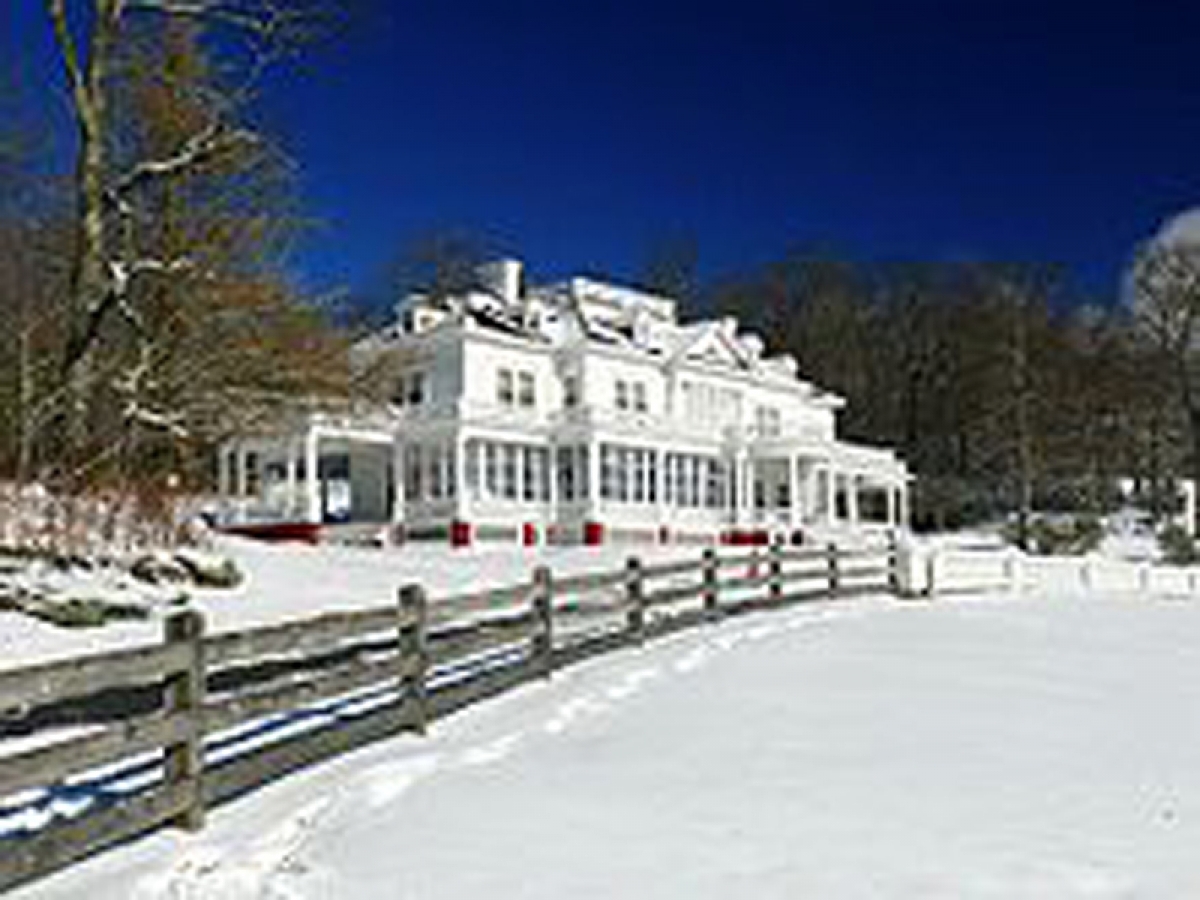This day was different. It was bitterly cold, even by the standards of the northwest North Carolina mountains in mid-January. The temperature was not much above zero, and the winds were gusting to 30 miles per hour. My best guess is the effective temperature with the wind chill factor was minus 25 degrees Fahrenheit.
I have been used to enduring cold outdoor winter sports all my life. When I was a kid, I can remember snow sledding in the pasture behind my family's house in Taylorsville, even though my Dad warned the temperature was 0 degrees. My outdoor group of guys in college and law school went on several backpacking trips with temperatures in the single digits. But minus 25 degrees is different. That's just dangerous.
I parked by the Manor House and got geared up. I put on all my warm clothes; multiple layers of socks, long johns, toboggans and gloves; down coat, face mask and hood; the works. I snapped into my ski bindings and took off. My route took me first skiing down the carriage trail to the southwest towards Bass Lake. There was nobody else on the trails. I found that I could not achieve thermodynamic stasis. Standing still made me get cold. But any significant effort in all those clothes made me sweat. Yet, if I took off some clothes, like my face mask, then that part of my body froze. I could not get into balance. I got nervous and headed back towards the Manor House.
Thermodynamic stasis is essential for our bodies at all times. It means that we are not gaining or losing too much heat. If we keep gaining or losing heat without controlling the situation, then we can die from heat stroke or hypothermia. Most times, our bodies do an excellent job of maintaining stasis. A little too much heat and we sweat; a little too much cold and we shiver. But the more extreme cold or hot it is, then the harder it is to stay in stasis. In the winter, without enough warm clothes or an external heat source, like a campfire, then we simply get hypothermia. But if we have on too many clothes, then we can get sweaty with exertion, which causes the clothes to get wet and lose their insulative ability. Then you can never get warm and hypothermia is inevitable. Taking off sweaty clothes simply speeds up the chillng process.
What I found was that I was suffering from the latter. The hard work of cross-country skiing lead to damp clothes, which lead to loss of insulation, and then to chill. But I refused to give up yet. I ate the coldest lunch I ever experienced sitting on the horse barn porch. Then I skied down the hill on the trail under the parkway to the north towards the fire tower.
After skiing hard and shivering hard for a while, and reaching the point where I became concerned for my own safety, I turned back towards the Manor House. As I approached the horse barn, within sight of the parking lot, my body stiffened up. It was real hypothermia. The simple act of skiing up the hill to my Bronco became impossible. For a minute, I was afraid that I would freeze to death within spitting distance of a ride home. In a mild panic, I tore off my skis, kicked my boots into the snow and clawed my way up the hill to the parking lot.
On the way down US-421 to North Wilkesboro, I kept on all my warm clothes and kept the truck heater running on high. I still did not fully warm up until I got home and took a hot shower. After telling my story to Allison and Kimberly, they called me several grades of foolish.



